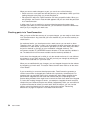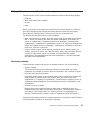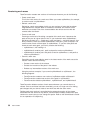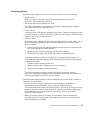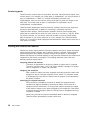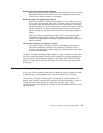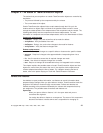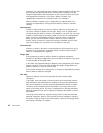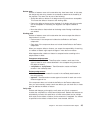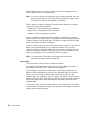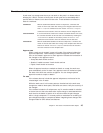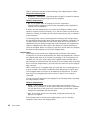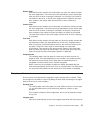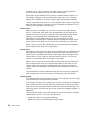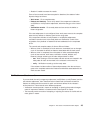resolution. The component you open a defect or feature against should be one
that manages the parts affected by the enhancement or problem. Use the
component descriptions and the structure of your family’s hierarchy to find the
most appropriate component. If you open a defect or feature in an
inappropriate component, the component owner can reassign it.
While the defect or feature owner is responsible for implementation, the
originator is responsible for verifying that the defect or feature is resolved
correctly.
Returned state
A defect or feature owner can return a defect or feature to its originator. You
can return a feature or defect from the open, design, size, or review state if
you decide that the defect or feature is not feasible or not valid. You can return
a defect or feature back to the working state only if it has no associated work
areas. If there are associated work areas, you must cancel or undo them
before you can return the defect or feature. When you return a defect or
feature, add your reason for returning it so that the originator and any other
users can evaluate why you believe it is not feasible or not valid.
Canceled state
A feature or defect in the open or returned state can be canceled only by its
originator or by a superuser. A canceled defect or feature remains inactive
unless it is reopened by the originator.
Design state
If the component to which a defect or feature is assigned includes the
dsrDefect or dsrFeature subprocess, you move defects or features in the open
or returned state to the design state.
In this state, the proposed change is designed, and a description of the design
change is entered. The owner must describe the design change before the
defect or feature can move to the next state.
If the release includes the fix subprocess, fix records are automatically created
when a defect or feature is designed.
Size state
Defects or features move to this state after the owner enters design
information.
In this state, users can create a
sizing record
for each release that contains
parts affected by the enhancement or problem. A sizing record identifies the
work that is required for and the resources affected by the defect or feature.
The owner of the component that is referenced in the sizing record is the
owner of the sizing record. The owner is responsible for entering information
about the amount of work that is required to implement the feature or resolve
the problem.
The sizing record owner can reject the sizing record if it does not affect the
specified component. After all sizing records are either accepted or rejected,
the defect or feature moves to the review state or returns to the design state if
more design information is needed.
42 User’s Guide



